The hardiest veg to plant in 2023
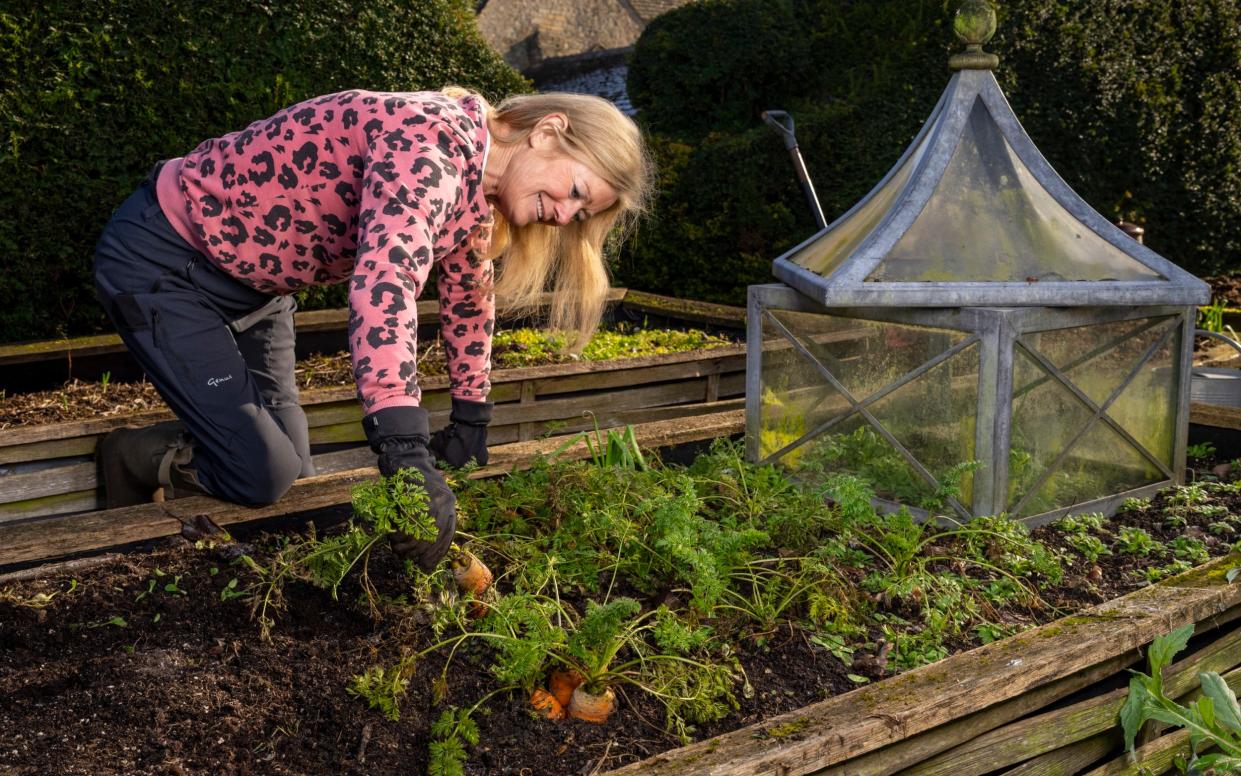
Many gardeners struggled with vegetables last year, as the intense heat and dry conditions affected lots of crops, especially courgettes and runner beans. Success depends a lot on choosing the best varieties, and the plethora on the market makes this hugely confusing.
The first step for growing great veg is the choice of variety. You can no longer always depend on old traditional varieties such as beetroot ‘Boltardy’ or Brussels sprout ‘Evesham Special’ – despite having had an excellent track record. Not being “F1” varieties (more on that below), the seed crops are grown in fields and, as they are open pollinated by insects and/or wind, they do not remain pure.
Maybe pollen from a nearby crop of a different variety has pollinated the crop and subtly altered the genetics. Plants are watched over by growers and any that look different from the norm are removed, but sometimes this is not as rigorous a process as it should be and the variety loses its edge.
F1 varieties
More and more vegetable seeds are F1 varieties. These plants are bred so that they are genetically identical. They have “hybrid vigour” and are strong growers. The cost of production is higher and the seeds are therefore more expensive, but in some cases, it really does make growing far more successful.
Parsnips made easy
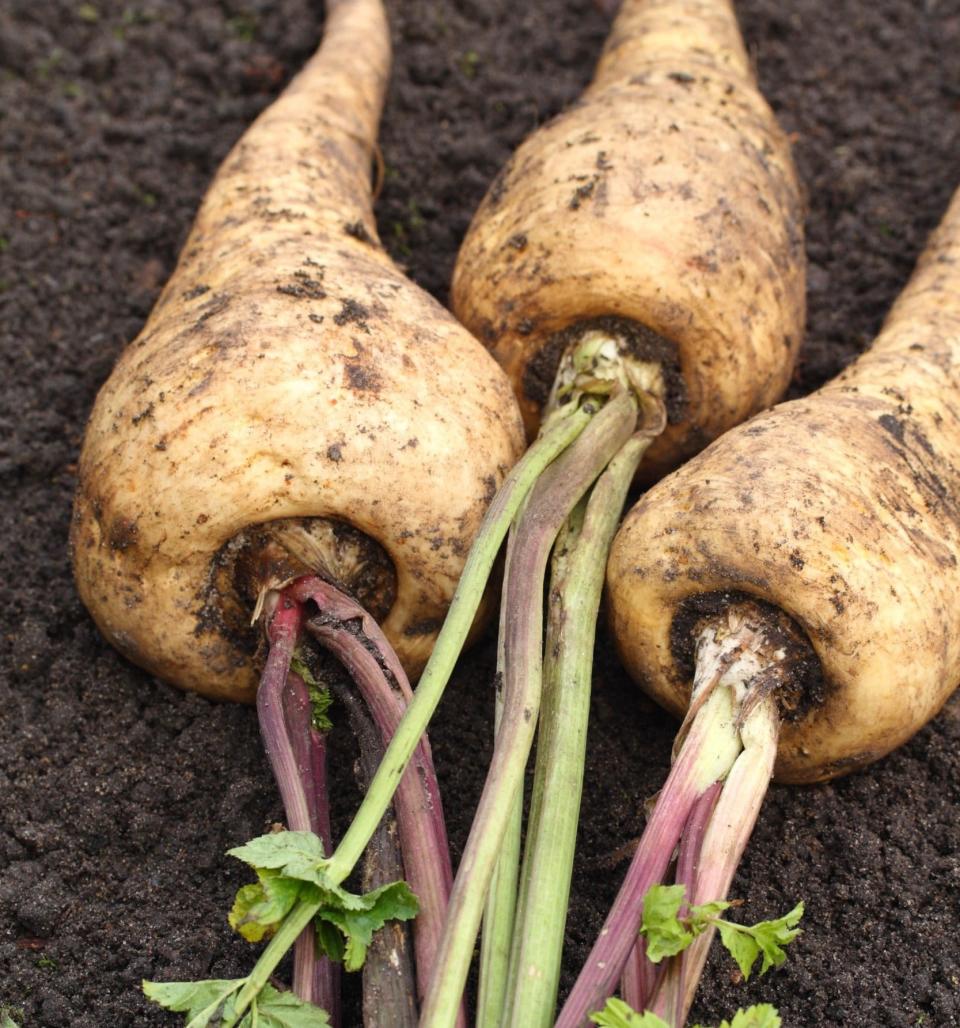
F1 seeds make growing parsnips a real breeze now. Varieties such as ‘Gladiator’ F1 have such vigour that even when I have sown them as late as May, when the soil is warm, they have given me stonking, well-favoured roots. Parsnips germinate within 1-2 weeks at warmer temperatures (18-23C is optimum), but at lower soil temperatures they can often take 4-6 weeks.
During that time delay seeds can rot, be washed away or attacked by vermin, so speeding up germination by sowing when the soil temperature is nearer optimum conditions gives far better results. And with the vigour of these F1 varieties, you can be sure they will soon catch up. Once the roots are down they need very little watering, even if dry. I leave them in the ground through the winter and dig when I need them.
Courgettes
Courgette ‘Summer Holiday’ F1 (Kings Seeds) is on my spreadsheet for this year. This is an attractive, round, striped yellow courgette, which grows in a compact manner and has a very good adaptability to heat. I am not normally a big fan of the gaudier coloured versions as they tend not to yield so well, but I am assured this is not the case here. I will also pop in some ‘Defender’ F1 as I do find this a tasty, dependable high yielder with a great resistance to mildew, which can be a big problem in dry summers.
Cavolo nero
The first F1 cavolo nero variety ever bred is called ‘Raven’, and it was bred by Tozer for the UK’s climate (rather than Italy’s). I am growing ‘Raven’ as it is hardier, has higher vigour, is less prone to bolting and so is much easier to grow. I love it because it adds such style to the veg beds and you can pick it from September to February from a May/June sowing.
Runners and/or French?
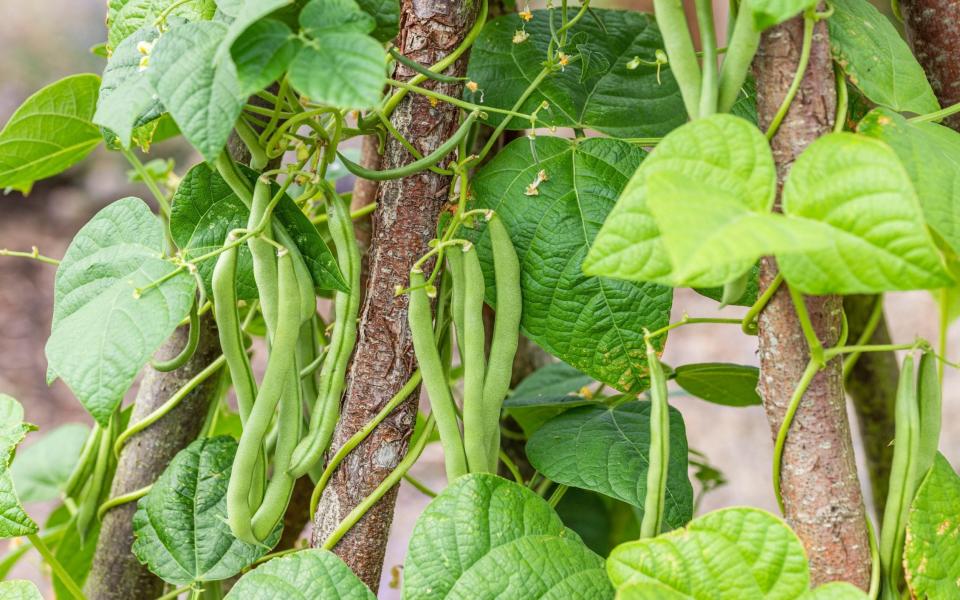
Runner beans did not produce their usual fantastic returns in last summer’s heat. They are susceptible to high night temperatures and drought, and they are insect pollinated. French beans conversely are mainly self-setting and generally do far better than runners in drier conditions such as those of last year.
The climbing French Bean, ‘Blue Lake’ (Kings Seeds), grows to almost 5ft, with tasty stringless pods, and I find it extremely prolific in any conditions we throw at it.
If, though, you desire the proper runner bean taste, then try runner bean ‘Moonlight’ (Tozer/Kings Seeds), which is a natural cross between a runner and a French bean. It sets pods much more easily than traditional runners, even under challenging conditions when conventional varieties struggle.
It also retains runner bean flavour with French bean succulence. For succession, plant out the first in spring and a second crop in July. I always get my plug plants of these and my courgettes out in April and cover with fleece if frost threatens. That way they get well-established before we get the late spring droughts.
Broccoli
This easy veg is a winter staple and ‘Claret’ F1 (Kings Seeds) is a superb variety, with great flavour and vigour. I also grow ‘Cima di Rapa’. This is extremely quick from sowing to harvest, is much like broccoli (but you use the leaves and flower buds), and I find it is hardy through the winter here in the cold East Midlands. Sow now in a cold greenhouse for autumn/winter harvest.
Salad onions
If we have another hot year, the perfect salad onion is ‘Marksman’ (Tozer), bred specially for challenging hot conditions. It is fine for spring to summer cropping and has good disease resistance, which can be good for autumn pickings. I am sowing these now and successionally until the end of June.
I always sow all my seeds in plug trays in a cold greenhouse or frame. I much prefer growing several seeds, 10 per plug, of salad/spring onions. This way you get far more per square metre than by sowing them individually, and it is much quicker! Mid March is a good time to plant out sown onions (from sowings 4-5 weeks previously) as they are perfectly hardy.
Chillies
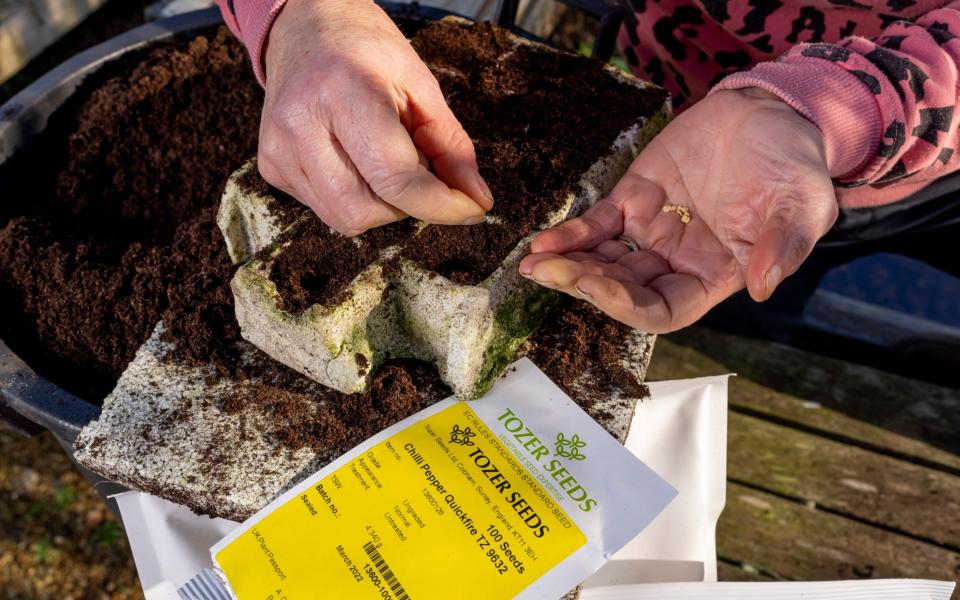
Not many struggled with chillies last year, outside or in; I had plentiful crops. If you are slow off the mark, chilli pepper ‘Quickfire’ F1 is the fastest maturing ever; it can be sown and grown all the year round on a window sill. I love the look of fruiting chilli plants on my kitchen window for Christmas. It is a hot one though, so apply caution!
Brussels sprout
The modern varieties of these are sweeter and they are a perfect crop to eat through the winter. Don’t be tempted to pinch out the tops till the end (and then eat them); if you pinch out earlier, all the sprouts will ripen together, which is not always wanted!
Don’t be tempted to firm in the plants too hard on transplanting – this used to be the advice in order to encourage big, firm buttons, but it will just compact the soil, is never done commercially and is not necessary with modern varieties. Try ‘Churchill’ F1 (Tozer), an early maturing variety which is highly reliable and sweet. I am sowing now.
Celery
This really does love moisture, but ‘Victoria’ F1 (Kings Seeds) is a fabulous, self-blanching variety that does not go over quickly. You can grow it in places you might have thought were too dry. Sow in plugs indoors now to plant out in May/June.
Spinach
I often just sow a perpetual spinach such as spinach ‘Perpetual’ (or spinach beet) from Thompson & Morgan as it tastes very similar to spinach. Its plus points are that it is highly resistant to bolting in hot weather and in mild winters you can pick right through, including during the “hungry gap” (April and May). I’ll sow it in March and be picking for the next 12 months.
I am trying spinach ‘Santa Cruz’ F1 (Moles Seeds). It is very flexible, in that it can be used at all sizes, including babyleaf to large leaf, can be sown any time of the year, can be overwintered, and is slow bolting to boot. I’ll sow this now, and again in September.
Celeriac
I love this veg and often use the leaves to flavour stews and soups to give that celery taste. Even on dry soil in the East Midlands, I can grow large roots with little water, but the secret is to leave them in until just before the frosts – they can double in weight between mid September and the middle of November, at which point I lift and store them in a bucket in a frost-free shed.
I sow in plugs in early March (in a cold greenhouse) and plant out in mid May. Jack Buck Farms grows hundreds of acres of it and the owner, Robin, always gives me great growing tips. He gave up growing varieties from garden centres over 20 years ago and now opts for F1 ones, such as ‘Asterix’ F1 (Kings Seeds).
Aubergines
I grew these once in an insect-proof polytunnel and they were dire! Insect pollination is important. In my greenhouse, with the door often open, I get excellent results. Charles Dowding swears by the variety ‘De Barbentane’.
Radicchio
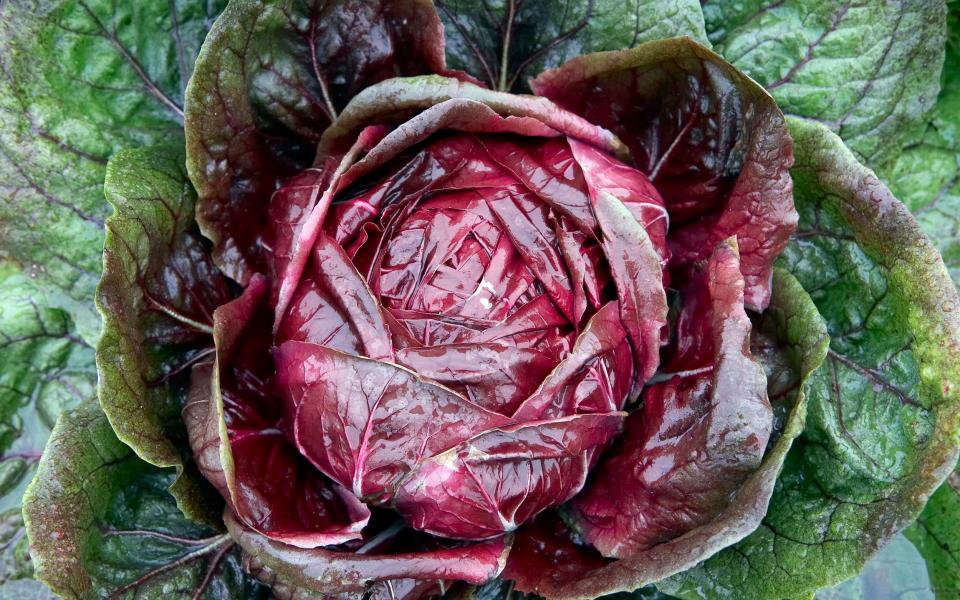
Another Charles Dowding recommendation is radicchio ‘506 TT’, which the Seed Cooperative is apparently stocking. This red-leaved type forms large heads the size of small grapefruit, with no blanching. Sow it in June/July and harvest from September to December. It’s great for winter salads.
Coriander
Coriander ‘Calypso’ is at least two weeks slower to bolt than standard coriander, so it is much more adaptable in high temperatures in the summer when most varieties bolt more quickly. In addition to this, the low growing point allows the plant to be truly cut-and-come-again. When the growing point is higher up (as with many varieties), when you cut it, you remove the growing point and its ability to grow back.
Cut-and-come-again lettuce
There is a huge range of these on the market. I like ones with a good balance of leaves that grow at the same speed at the same time of year. The Tuscan Salad Mix from Seeds of Italy has four types of leaf: soft, crunchy, ruffled and Romaine-style, which suits this chef well!
Carrots
‘Early Nantes’ is great for early and late sowings and has great flavour. In raised beds, mine don’t get carrot root fly; and with the bed being higher off the ground, the warmer temperatures (in frosty conditions these can be six degrees higher than at ground level) keep them usable right through the winter.
I am still lifting ‘Miami’ F1 (Kings Seeds) from an early June sowing, as I need them now. If your carrots are splitting, erratic watering is often the cause.
Others
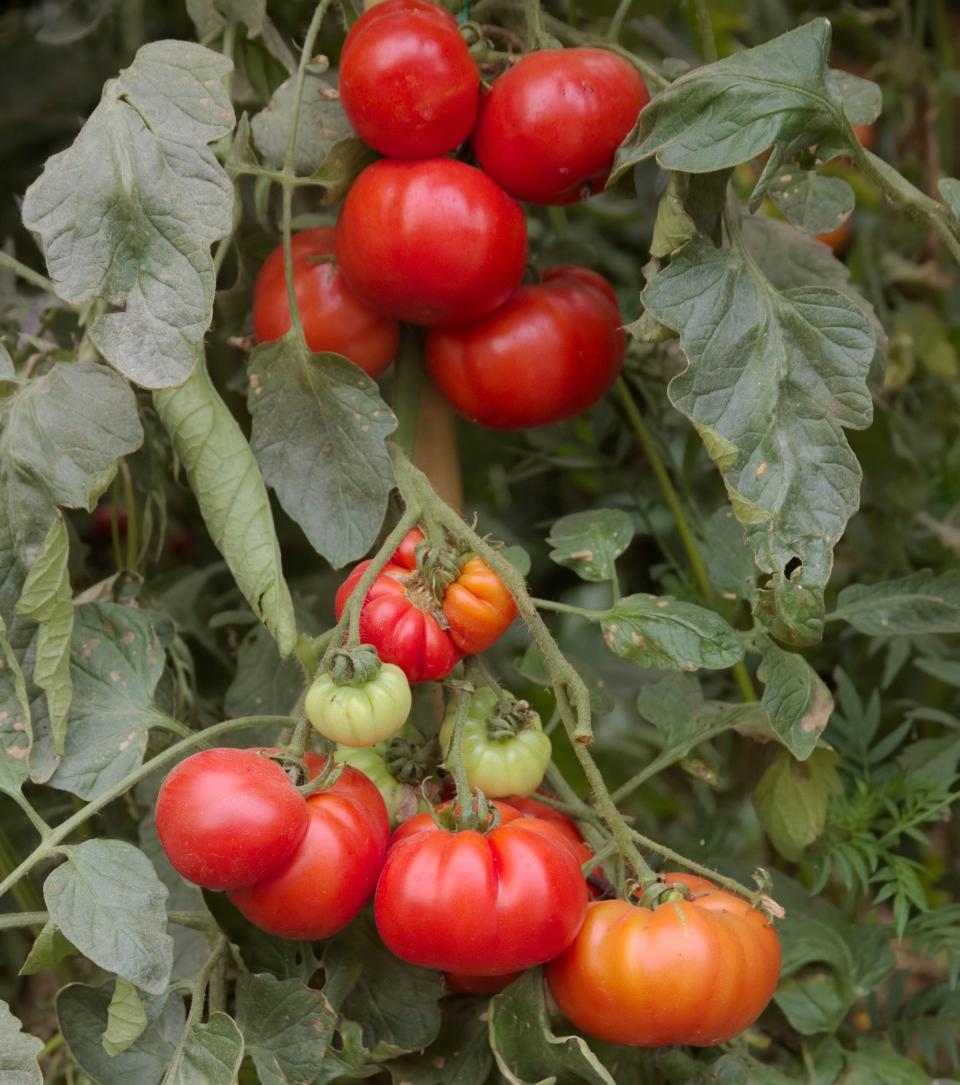
I am sowing cucumber ‘Carmen’ now, which I find is best for mildew resistance. Kohl rabi ‘Kossak’ F1 (head and shoulders above all other varieties) are super easy and indispensable in winter and summer salads, as they are sweet and crunchy. ‘Super Marmande’ tomatoes are easy beefsteaks with great flavour, and small ‘Sungold’ F1 tomatoes (a Raymond Blanc favourite), which come into fruit exceptionally early, are incredibly sweet and often fruiting at Christmas in my unheated greenhouse. All these are from Thompson & Morgan.
Community Integrated Care’s Sow and Grow project starts on March 6. The campaign is all about encouraging people who receive care and support to enjoy the benefits of gardening as we approach spring. Bunny is taking part in a Q&A event on the charity’s What To Do platform as part of the project. The event is free to anyone who receives care and support and begins at 2pm on March 6. More details at what-to-do.co.uk


